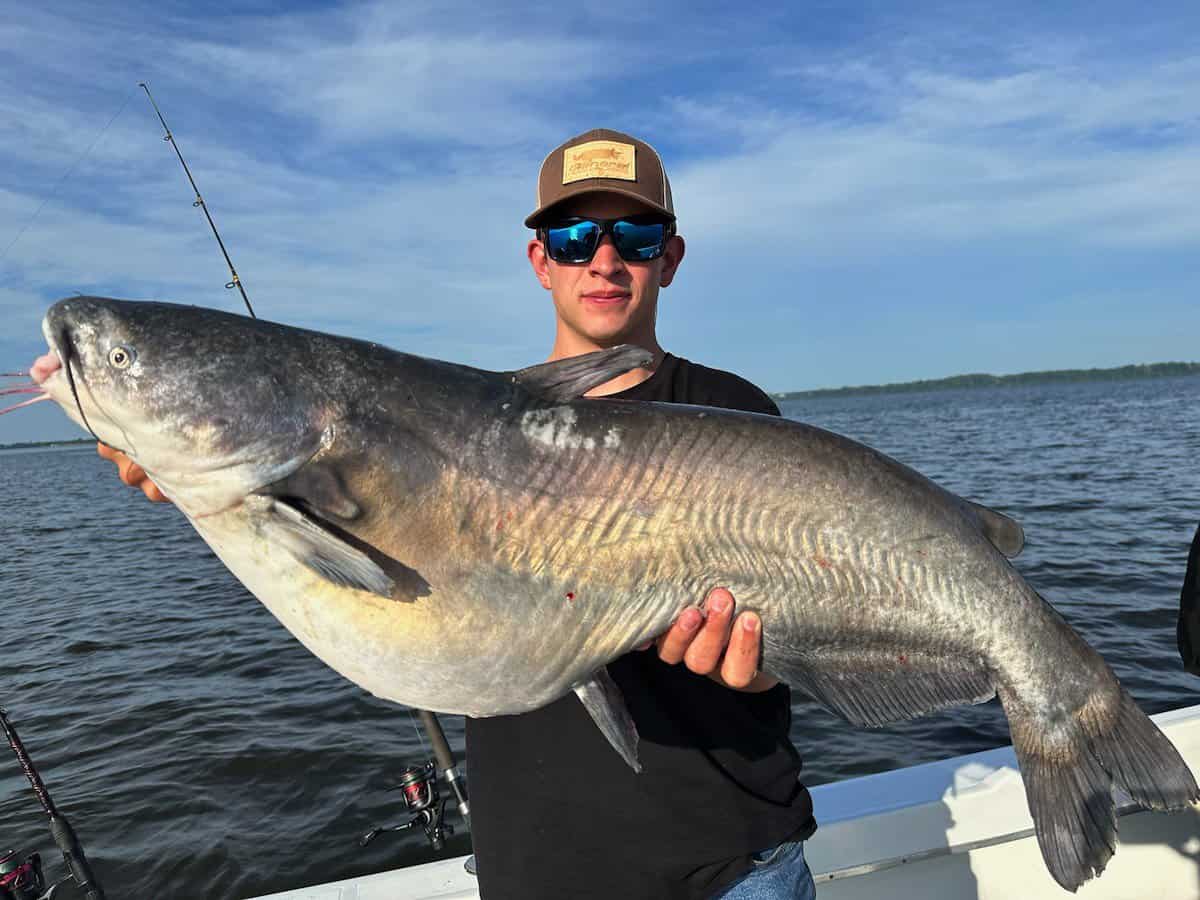Did you know that the largest catfish ever caught in the United States weighed more than an average Rottweiler?
That’s right, a blue catfish landed in Virginia tipped the scales an incredible 143 pounds. It set a world record for the species.
According to the American Kennel Club, male Rottweilers usually weigh between 95 and 135 pounds, while females average 80 to 100 pounds.
Richard “Nick” Anderson hauled that behemoth blue catfish from Buggs Island Lake, also known as John H. Kerr Reservoir on the North Carolina side of the reservoir. The 2011 catch was 57 inches long, with a girth of 43.5 inches.
Blues are the largest catfish species in America. They are native to the Mississippi River drainage, including major tributaries such as the Ohio and Missouri rivers.
Blue catfish have been transplanted coast to coast and have become favorite targets for trophy catfishers. More than a third of all states now have certified blue catfish records of at least 100 pounds. (This complete list of U.S. catfish records will show you if your state is one of them.)
While it’s the thrill of a lifetime to land a 100-pound fish, if you ask many fisheries biologists and other conservation-minded people, these “swimming garbage disposals” have become too prevalent in some watersheds where they are not native.
In Chesapeake Bay’s tributary rivers, for example, an exploding population of blue catfish is gobbling up native fish and shellfish. Five years ago, authorities estimated there could be 100 million blue catfish already in the bay’s rivers and brackish waters. The species continues to expand its range, posing a threat to blue crabs and other local fisheries.
Maryland authorities, for example, ask anglers to keep every blue catfish they can catch without limits. Of course, be sure to check current angling regulations wherever you fish.
Perhaps helping in that effort, blue catfish are delicious. Some compare their mild, flaky flesh to striped bass, a species that conservationists are working to recover to historic numbers in the Chesapeake Bay.
Authors of a 2020 University of Maryland Extension fact sheet suggested that “eating blue catfish might just be the tastiest way to save the Bay.”
Most anglers tempt blue catfish with large chunks of dead fish, commonly called cutbait. Very fresh, locally sourced baits often work best, so as fishing rules allow, many anglers will start their day catching bait before switching over to catfishing.
Come prepared for battle if you want to break Nick Anderson’s record. Use heavyweight hooks, lines, rods and reels that can hold up to 100-plus-pound fish for 30 minutes or more.
Despite its monster credentials, the nearly 5-foot-long Virginia blue catfish doesn’t quite measure up to the world’s largest catfish.
Just last year, an angler caught and released a 9-foot Wels catfish in Italy that may have been the longest catfish ever landed on a rod and reel. It was released and not weighed.

